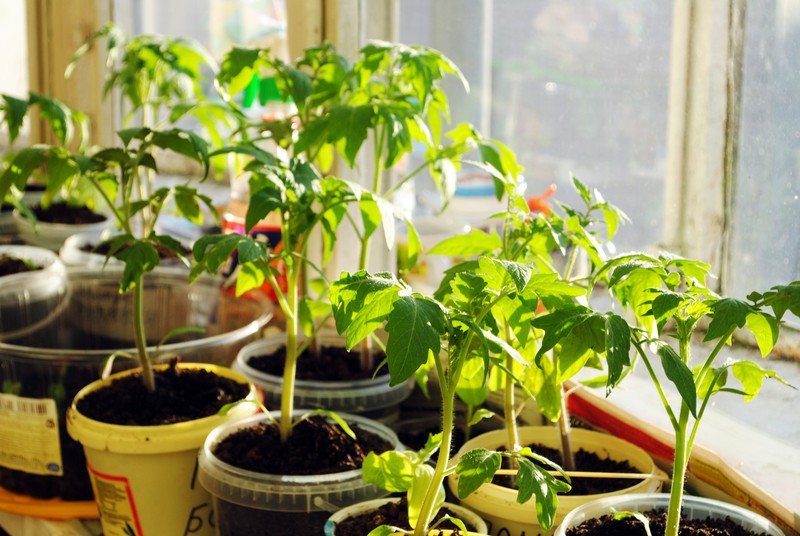Growing a garden is an economical way to offset the cost of rising produce and in a SHTF moment, could be a critical food source.
Most of us, however, make early mistakes or at least do not focus on what we should in order to have as strong a garden as possible.
In my work advising gardeners and farmers, the number one problem I see is people starting out with weak seedlings. Gardeners often set out with admirable efforts to save money and be self-sufficient, but they can really shoot themselves in the foot, before they even step out into the garden, when they start with weak seedlings. Weak, leggy, pale seedlings usually result in plants that are anything but vigorous.
When these babies are transplanted into the garden they are not prepared to face the world. Their pale foliage is likely to burn in direct sunlight, their thin stems have trouble holding up in the wind, and their delicate health sends a loud call out to tiny predators, “Come and get it!” Pill bugs, which normally stick to recycling, will happily munch on your precious little seedlings even though they are not actually dead… yet. Cut worms can endanger the best of your young plants, and they especially like the overly tender stems of plants that have had a poor start in life.
Whew! That is not how you want to start out this gardening season. So, let’s get some stocky, healthy, rich green starts going. First, we want fresh, viable seed. A germination test can save time and material, but it doesn’t guarantee that your seeds are fresh. Have they been stored properly? Seeds are still the cheapest gardening investment. Be picky about who gets a spot in the seedling tray!
What about your germination mix? If you usually just scoop some soil out of the garden, stop before you kill again! Good garden soil is fine for direct seeding in the garden bed, but seeds sown in containers deserve an organic mix. There are some excellent mixes available for purchase, but it is so easy and fast to mix your own that it just makes sense to do it yourself. Many gardeners develop fancy secret recipes, but we are going to keep it simple. I have had the best results using a mix made of half coir fiber and half fresh worm castings. It’s that simple!
If you don’t have access to either of those, use the very best, still moist, living compost or leaf mold. If you use compost you should sift it before planting; you want the finest grains, not the sticky clumps. Some gardeners sterilize their germination mix. I don’t agree. I always use ingredients with good, active biology. How would you like to be born into a little plastic cell, devoid of life? Trust in Mother Nature and use a mix with vibrant biology.
When it comes to the container you use, the type of container is not important. I like the manufactured seed starting flats. They are cheap, reusable and recyclable. They drain well, and everything is contained in a well fitted tray. If you don’t have these or don’t want them, use any well-drained container that you like. Fill the seed cells almost to the top with your starting mix. In order to avoid tearing the young roots when you remove the seedlings from the container for transplanting, it is a good idea to tamp down the germinating mix in the cells now.
After tamping, add chemical free water to thoroughly moisten the starting mix. If you really want to be nice, use liquid or dry seaweed according to the instructions on the label. Seaweed is a great item to have on the shelf and it keeps indefinitely. When the staring mix is moist, you can plant your seeds at the depth specified on the seed packet. When the seeds have been planted, spray the top of cells with water until the mix is well settled. After seeding, you can cover the cells with plastic. You can buy fitted plastic covers for seed starting trays, or just use some plastic wrap or a plastic bag.
Now, here is where the rubber meets the road: Light! You need a strong, reliable light source. You can compromise on many other aspects of gardening, but don’t cheat your green babies on the one thing they need most. If you have a greenhouse, choose the brightest spot for your new seedlings. If you’ve been setting your seed trays on a window sill, re-evaluate that choice. Remember: weak light = weak seedlings. If you want husky, healthy seedlings, don’t gamble on the fickle winter sun filtered through a window.
By following these tips, you can get your garden off on the right foot. Doing it right, early, is crucial to having a garden that ultimately provides the most robust fruits and vegetables possible.
To see other gardening tips for preparing to plant as strong of plants as possible as well as other general gardening tips, visit Grow Your Own Groceries.
